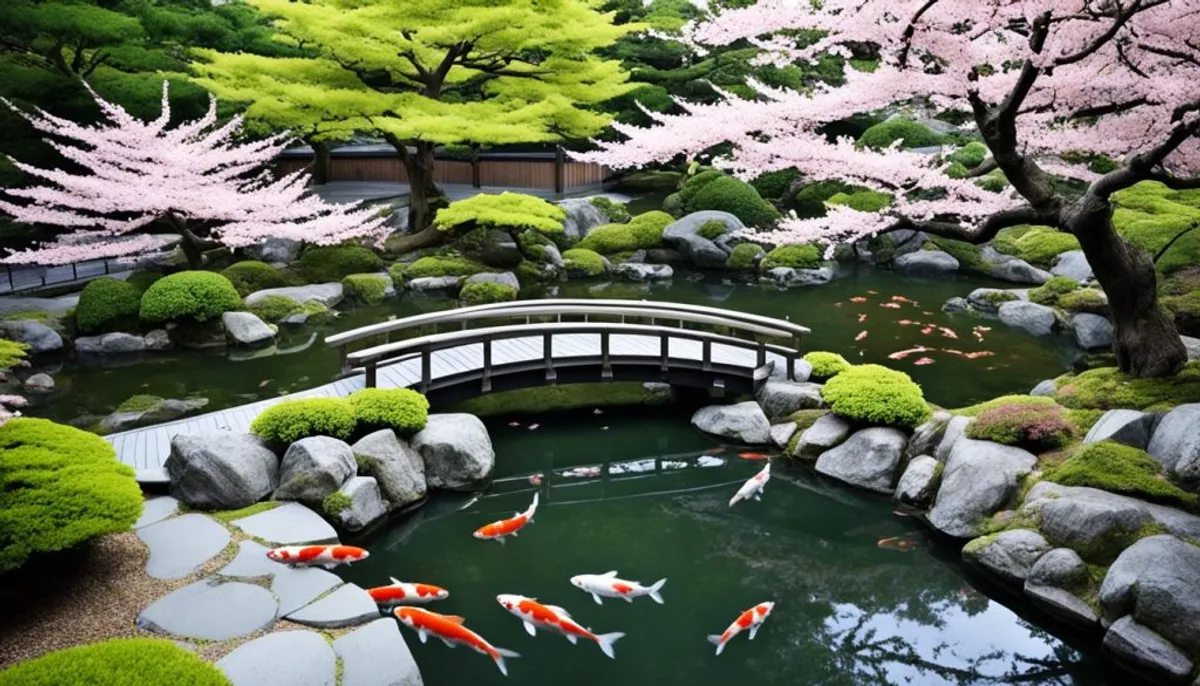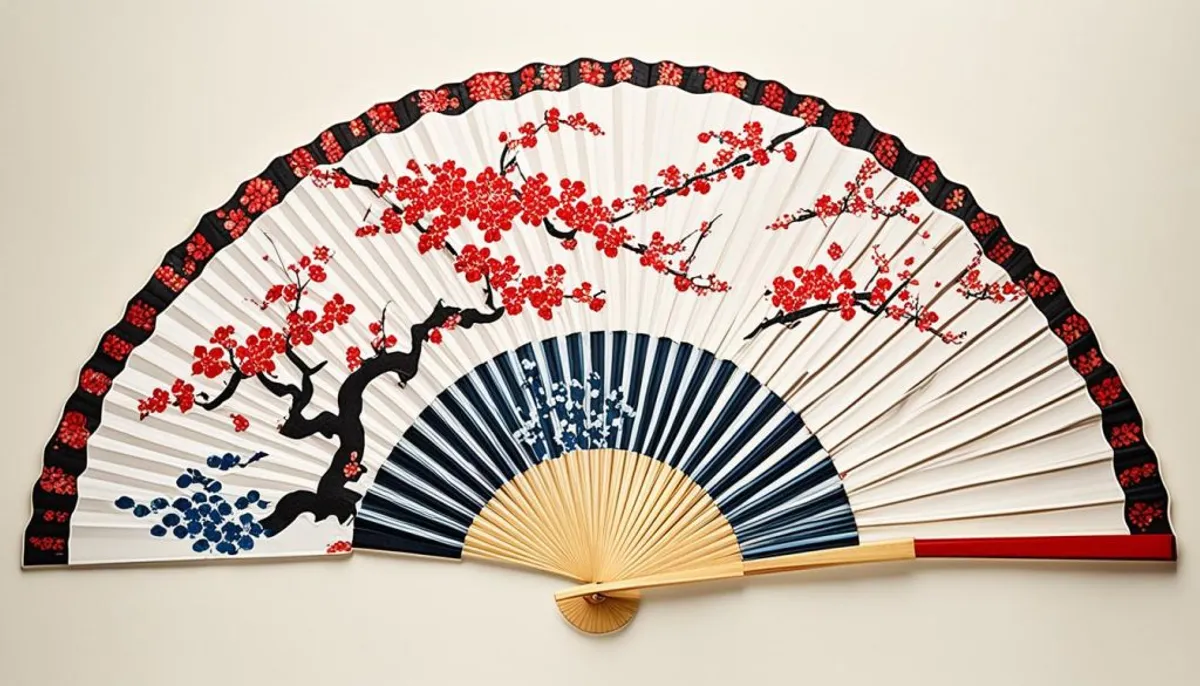Dive into the captivating universe of Japanese culture. Explore its millennia-old traditions and refined arts. Discover its unique gastronomy as well.
From the fascinating history to the subtleties of Japanese spirituality, this culture is unforgettable. Discover the hidden treasures of architecture, fashion, and Japanese lifestyles. These elements shape the identity of this unique country.

Introduction to Japanese Culture
The Japanese culture is rich and fascinating. It has evolved from the samurai to Buddhism. Today, it guides Japanese life, from craftsmanship to gastronomy. Let’s discover the treasures of Japanese cultural heritage.
Overview of Rich Japanese History and Traditions
The Japanese culture has ancient roots. It has evolved and adapted to many influences. The history of Japan is full of significant moments that have shaped current Japanese traditions.
| Period | Significant Events | Influence on Culture |
|---|---|---|
| Kamakura Period (1185-1333) | Emergence of the shogunate and samurai | Development of bushido, the honor code of the samurai |
| Edo Period (1603-1868) | Flourishing of Buddhism and Zen philosophy | Influence on arts, craftsmanship, and Japanese traditions |
| Meiji Period (1868-1912) | Modernization and opening of Japan to the world | Fusion of Japanese culture with Western influences |
Importance of Culture in Modern Japanese Society
Today, Japanese culture is still very present. It touches all aspects of life, from arts to customs. This shows the importance of cultural heritage in Japan and its ability to evolve.
Japanese Culture: Arts and Crafts
Japan is known for its high-quality Japanese craftsmanship. It ranges from delicate Bizen ceramics to elegant traditional Japanese fans. Among them are the sensu, uchiwa, and tessen. These objects showcase the finesse and creativity of Japanese artisans.
Bizen Ceramics and Its Influence
Bizen ceramics come from the Bizen region in Okayama. They are characterized by their natural look and unique texture. Unglazed, they are fired at high temperatures, creating pieces of art of rare beauty. This tradition influences many areas of Japanese craftsmanship.
Traditional Japanese Fans: Sensu, Uchiwa, and Tessen
Japanese fans are masterpieces of art. They demonstrate the delicacy and sophistication of Japanese culture. The sensu, uchiwa, and tessen are the main types. Each has its own characteristics and uses. These fans are more than just a means to cool off; they are symbols of recognized Japanese craftsmanship.
| Type of Fan | Characteristics | Usage |
|---|---|---|
| Sensu | Folding fan, often made of paper or silk | Elegance and refinement |
| Uchiwa | Rigid fan, usually made of bamboo | Cooling and everyday use |
| Tessen | Metal fan, sometimes used as a weapon | Defense and military use |

Japanese Traditions and Spirituality
The Japanese culture is rich and unique. The koi nobori, these carp-shaped banners, are very important. They represent values such as strength, perseverance, and good fortune.
Meaning of Koi Nobori
The koi nobori are raised on May 5th, during Boys' Day. They symbolize the wishes of parents for their children. Parents hope their sons will become strong and prosperous, like the carp that swims upstream.
- Carps symbolize strength, perseverance, and good fortune
- Koi nobori are raised during Boys' Day on May 5th
- They embody the wishes of parents for their sons
Koi nobori have become symbols of global Japanese happiness. Their meaning resonates with people of all ages. They remain a key element of Japanese culture, highlighting the importance of culture.
Japanese Gastronomy and Delights
Japanese gastronomy is known everywhere for its freshness and finesse. Summer dishes, such as sashimi and salads, showcase this delicacy. Japanese cuisine also offers sweet delights, like ramune, a famous summer lemonade.
Refreshing Traditional Summer Dishes
In summer, Japanese people prefer light and invigorating dishes. Among the favorite Japanese dishes, you can find:
- Sashimi, slices of raw fish with fresh condiments
- Raw vegetable salads, like sunomono made with cucumber
- Zaru soba, cold buckwheat noodles with a dipping sauce
These dishes, with their bright and refreshing flavors, are at the heart of Japanese summer cuisine.
Ramune, the Famous Japanese Lemonade
Ramune is a sweet summer delight. This Japanese lemonade is characterized by its unique bottle and fizzy taste. It is perfect for cooling off in the summer.
Ramune is very popular in Japan and has become a summer tradition. Its original bottle is also appreciated as decoration for festivals.
Japanese Architecture and Design
Architecture and Japanese design are essential in Japanese culture. The tatami, a type of flooring, is central. It showcases the craftsmanship and Japanese artistry that make interiors harmonious and beautiful.
Tatami: A Treasure of Japanese Architecture
Tatami is more than just a floor. It has been a key element of Japanese design for centuries. Made from straw mats, it brings naturalness and simplicity to spaces.
- Each room has a specific number of tatamis, highlighting the importance of this tradition in Japanese architecture.
- Tatami is carefully crafted, requiring precise weaving and finishing techniques.
- The standard size of tatami (90 cm x 180 cm) influences the dimensions of rooms in Japanese houses.
Tatami is crucial in Japanese architecture and Japanese design. It reflects the quest for harmony and aesthetics in Japanese culture.
Japanese Fashion and Lifestyles
Fashion and Japanese lifestyles showcase the richness of Japanese culture. Tabi, traditional socks, have become trendy. They demonstrate Japanese influence in global fashion. The Japanese futon, a bedding element, has specific selection criteria. This interests enthusiasts of Japanese fashion and Japanese lifestyles.
Tabi: The Samurai's Footwear Accessory
Tabi, traditional socks with separated toes, were associated with samurai. Today, they have become icons of Japanese fashion. Fashionistas around the world are adopting them. Their unique design and rich history make them essential pieces for enthusiasts of Japanese lifestyles.
Japanese Futon: Selection Criteria for This Traditional Bedding
The Japanese futon, a traditional mattress laid on the floor, is crucial in Japanese sleep culture. To choose your Japanese futon, one must consider size, style, and origin. These criteria ensure optimal comfort and an authentically Japanese sleeping experience.

Conclusion
The Japanese culture is full of traditions, refined arts, and unique delights. It spans from ancient history to modern lifestyles. It is an experience that is unforgettable.
By discovering Japanese culture, one sees its artistic heritage and traditions. One also learns about fans and koi nobori. Every aspect of this culture is captivating.
Japanese culture elegantly blends tradition and modernity. It is present in architecture and lifestyles. Explore this world further and let yourself be captivated by Japanese culture.
RelatedRelated articles


